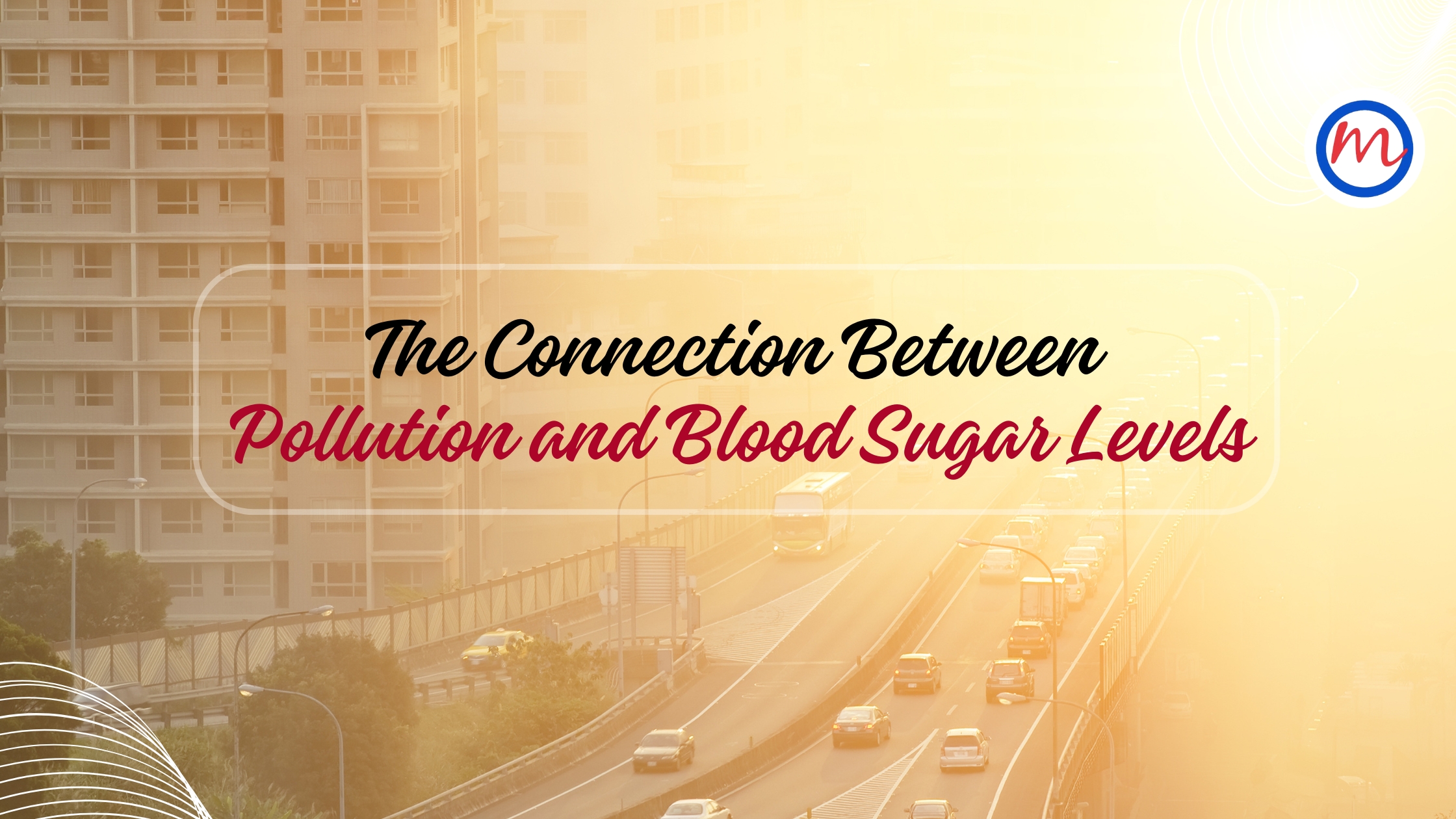The Connection Between Pollution and Blood Sugar Levels
Introduction: Pollution’s Overlooked Impact on Blood Sugar
Pollution is a pressing issue that impacts our lives in more ways than we often realise. While its effects on the environment and climate are widely acknowledged, its impact on human health—particularly blood sugar levels—is less commonly discussed.
Emerging studies indicate that air pollution may contribute to insulin resistance, a key factor in the development of type 2 diabetes. As diabetes becomes increasingly prevalent in India and around the world, understanding this link could help shape personal health decisions and public policy alike.
In this blog, we explore how pollution affects glucose metabolism and how you can protect yourself from its harmful effects.
How Does Pollution Influence Diabetes Risk?
A Growing Body of Research
Pollution is no longer just an environmental issue—it is a major public health concern. Research has shown that exposure to fine particulate matter (PM2.5), nitrogen dioxide and other airborne toxins can trigger inflammation and oxidative stress in the body.
These changes lead to:
- Increased insulin resistance
- Impaired glucose tolerance
- Higher fasting blood sugar levels
Urban residents, especially those living in areas with high vehicle emissions and industrial activity, face an elevated risk of developing metabolic disorders like diabetes.
Scientific Studies on Air Pollution and Insulin Resistance
Several studies conducted in recent years highlight a clear connection between air quality and metabolic health.
- Particulate matter (PM2.5), found in polluted air, enters the lungs and eventually the bloodstream. This can lead to chronic inflammation, affecting insulin signalling pathways.
- A study published in The Lancet found that individuals in high-pollution areas had significantly lower insulin sensitivity compared to those in cleaner environments.
- Children and older adults are particularly vulnerable due to their developing or ageing immune systems.
These findings suggest that pollution is an independent risk factor for type 2 diabetes, alongside diet, genetics and physical inactivity.
Other Ways Pollution Affects Blood Sugar Regulation
Apart from triggering inflammation, pollution can disrupt the body’s hormonal balance, further complicating blood sugar control.
Key contributing factors include:
- Heavy metals such as lead and mercury, which interfere with pancreatic function.
- Endocrine disruptors present in plastic waste and industrial chemicals that alter insulin regulation.
- Chronic stress from living in polluted environments, which raises cortisol levels—a hormone linked to increased glucose production in the liver.
This growing evidence highlights the need to consider environmental factors in diabetes prevention and management strategies.
Tips to Reduce Pollution Exposure and Support Blood Sugar Control
You may not be able to control pollution levels in your city, but you can take proactive steps to minimise exposure and protect your health.
Personal strategies:
- Monitor air quality using mobile apps like SAFAR or AQI India.
- Avoid outdoor activity during peak pollution hours, especially early morning and late evening.
- Use an N95 mask or pollution-filtering mask when outdoors.
- Keep indoor air clean with air purifiers and indoor plants like aloe vera, snake plant or peace lily.
- Consume a diet rich in antioxidants, such as amla, turmeric and green leafy vegetables, to combat oxidative stress.
These changes can improve your insulin sensitivity and support better overall metabolic health.
Government Initiatives and the Fight for Cleaner Air
Governments around the world, including in India, are implementing policies to curb pollution and protect public health.
Notable efforts include:
- Stringent emission standards for vehicles and industries (e.g. BS6 norms in India)
- Promotion of public transport and electric vehicles
- Incentives for renewable energy sources like solar and wind
- Public awareness campaigns on pollution-related health risks
- Global collaboration through agreements like the Paris Accord
However, policy change must be matched with community awareness and personal responsibility.
Conclusion: Take Charge of Your Health and Your Environment
Understanding the connection between pollution and blood sugar levels is more than an academic concern—it has real-life implications for millions living with or at risk for diabetes.
By recognising pollution as a modifiable risk factor, you can:
- Make informed lifestyle changes to reduce exposure
- Advocate for cleaner air policies in your community
- Support local and global initiatives aimed at sustainable living
Every step you take—whether planting a tree, choosing public transport or wearing a mask—contributes to a healthier environment and a healthier you.

Leave a Reply